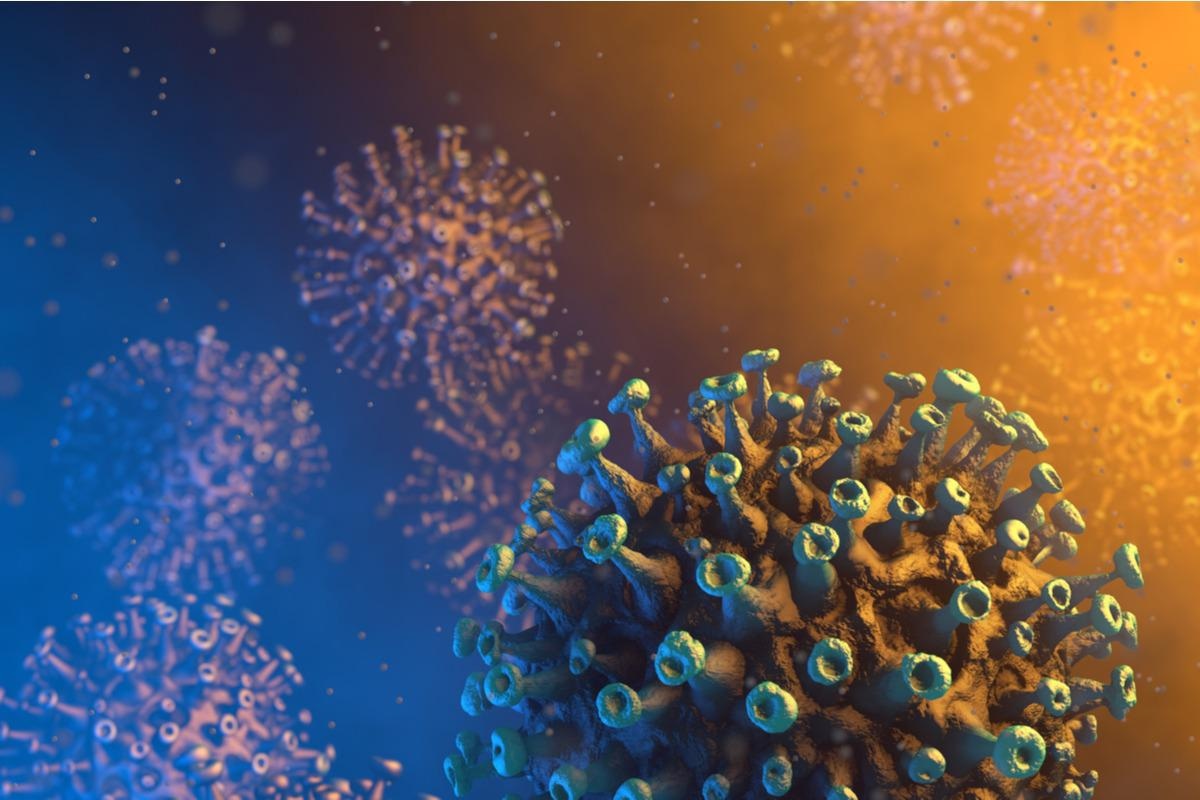In a recent study posted to the Research Square* preprint server, researchers differentiated between severe acute respiratory syndrome coronavirus 2 (SARS-CoV-2) variants using nanotechnology.
 Study: Rapid differentiation of SARS-CoV-2 variants on a nanotechnology enhanced DNA-chip. Image Credit: CROCOTHERY/Shutterstock
Study: Rapid differentiation of SARS-CoV-2 variants on a nanotechnology enhanced DNA-chip. Image Credit: CROCOTHERY/Shutterstock

 *Important notice: Research Square publishes preliminary scientific reports that are not peer-reviewed and, therefore, should not be regarded as conclusive, guide clinical practice/health-related behavior, or treated as established information.
*Important notice: Research Square publishes preliminary scientific reports that are not peer-reviewed and, therefore, should not be regarded as conclusive, guide clinical practice/health-related behavior, or treated as established information.
Emerging novel variants of SARS-CoV-2 differ from previous variants in terms of transmissibility, infectivity, pathogenicity, and antigenicity. This necessitates the development of sensitive and rapid SARS-CoV-2 detection approaches to differentiate between the various viral lineages.
About the study
In the present study, researchers used a fluorescence-enhanced microarray for multiplex analysis of nucleic acids (FEMMAN) to detect and differentiate between eight SARS-CoV-2 lineages, including SARS-CoV-2 wild-type (WT), B.1.1.7 (Alpha), B.1.351 (Beta), P.1 (Gamma), B.1.617.2 (Delta), C.37 (Lambda), B.1.621 (Mu), and B.1.1.529 (Omicron).
The team developed a new surface layering to maximize the fluorescence enhancement of the pGOLD substrate, which is used to detect viral ribonucleic acid (RNA). The testing procedures were optimized with the introduction of exonuclease digestion and isothermal amplification using a set of probes. The team subsequently replaced complex steps of RNA extraction with simple thermal lysis to be employed for point-of-care testing.
The team incubated the FEMMAN chip with biotinylated single-stranded deoxyribonucleic acid (DNA) target after layering pGOLD with a layer of bovine serum albumin (BSA). This was followed by the identification of the SARS-CoV-2 variant with streptavidin. Furthermore, the atto-molar sensitivity of the FEMMAN assay towards SARS-CoV-2 was enhanced by performing isothermal amplification.
The team also amplified the samples by reverse transcriptase (RT)-recombinase polymerase amplification (RPA) and digestion by lambda exonuclease, which selectively brokedown the 5'-phosphorylated strand of double-stranded DNA. Asymmetric RPA was also performed to generate a single-stranded amplified sample resulting in lower detection sensitivity.
Furthermore, a hotspot mutation site named N501 found in SARS-CoV-2 variants was deemed the target site to estimate the performance of FEMMAN-RPA assay. The team also designed the probes and primers based on the N501 sequence and bilateral conserved regions. Subsequently, the specificity of the FEMMAN assay was described by probing a 15-plexed DNA microarray in the absence of an amplified template.
The team also designed a SARS-CoV-2 panel that included three different mutation sites of the SARS-CoV-2 spike (S) protein for the FEMMAN-RPA assay. The performance of the panel was assessed with synthetic viral RNA of the SARS-CoV-2 WT and Delta variant. The accuracy of the assay for the identification of SARS-CoV-2 lineages was evaluated using lentiviruses having genomic fragments of the S protein of the eight viral lineages.
Results
The study findings showed that probing the ten targets corresponding to three mutational hotspots in the SARS-CoV-2 S gene with FEMMAN resulted in the rapid and sensitive detection of nucleic acid with sufficient differentiation between post-amplification and single nucleotide variant (SNV). The team noted that for 90 SARS-CoV-2-infected individuals, the FEMMAN showed 100% specificity and 100% sensitivity in SARS-CoV-2 detection with 91.1% concordance with next-generation sequencing (NGS) with respect to variant identification.
Furthermore, the fluorescence enhancement on pGOLD showed a positive association with the distance between the pGOLD substrate and the detection fluorophore to a certain extent. The team also found that a layer of BSA on pGOLD generated free amino groups that were sufficient for the immobilization of thiolated DNA probes leading to the highest enhancement of the fluorescence signal.
Isothermal amplification showed that RPA increased the sensitivity of the FEMMAN assay. Detection of SARS-CoV-2 with single-copy sensitivity after isothermal amplification was confirmed via digital-droplet polymerase chain reaction (ddPCR). The sensitivity of ddPCR was matched with that of the PCR-based assay and specific high-sensitivity enzymatic reporter unlocking (SHERLOCK). The sensitivity of the single digital copies was achieved via post-amplification of the FEMMAN assay, which was not achieved with conventional glass slides.
The team noted that the sensitivity of DNA detection was comparable in the multiplexed array and single DNA detection with the background level fluorescence signal on the probe for non-specific DNA. The intensities of fluorescence on the single and double nucleotide mismatches were approximately 10% and 5% of the match version intensity, which described the SNV discriminatory ability of the FEMMAN chip.
The amplification of FEMMAN by RT-RPA achieved target identification up to sensitivity to single-digit copies and improved SNV discrimination. Moreover, the fluorescence images after the evaluation of GEMMAN-RPA performance with the SARS-CoV-2 panel showed that the assay was sufficiently capable of discriminating among viral lineages with SNV distinction.
Conclusion
Overall, the study findings showed that the FEMMAN chip had diagnostic as well as surveillance abilities that could be clinically used in monitoring SARS-CoV-2 variants. The researchers believe that the FEMMAN assay could be further developed to perform multiplexed identification of several SARS-CoV-2 lineages that could emerge in the future.

 *Important notice: Research Square publishes preliminary scientific reports that are not peer-reviewed and, therefore, should not be regarded as conclusive, guide clinical practice/health-related behavior, or treated as established information.
*Important notice: Research Square publishes preliminary scientific reports that are not peer-reviewed and, therefore, should not be regarded as conclusive, guide clinical practice/health-related behavior, or treated as established information.